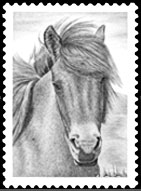
On January 14, 2021, Royal Mail released a series of stamps dedicated to National Parks.
The National Parks of Great Britain have an extraordinary variety of natural landscapes - from gentle hills and pastoral plains to giant, razor-sharp sea cliffs, from dense forests to wilderness and marshes. These are the places where people lived and worked for centuries, where their life was largely determined by the nature around them.
National Parks in Great Britain began to be created in the second half of the XX century, their designation preceded by an active social movement for the development and preservation of the country's natural resources and for free access for all. The issue of this series of stamps is dedicated to the 70th anniversary of the founding of the first National Nature Park in Great Britain, the Peak District National Park in 1951.
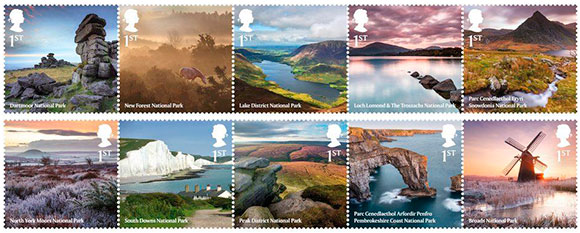
10 stamps of the series depict stunning views of the 10 most beautiful and popular parks in Great Britain: Peak District (founded in 1951), Lake District (1951), Snowdonia (1951), Dartmoor (1951), North York Moors ( 1951), The Broads (1989), New Forest (2005), South Downs (2010), Pembrokeshire Coast (1952), Loch Lomond and the Trossachs (2002).
Each of the parks is interesting and beautiful in its own way - sometimes it is hard to believe that all this natural variety is located within the territory of one country. Philip Parker of Royal Mail noted that they are particularly delighted and proud to show the beauty of these natural parks via stamps right now, when many people are restricted in their movement due to the pandemic and cannot visit these magnificent places in person.
New Forest National Park
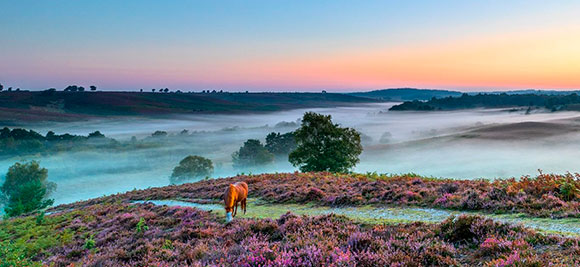
The New Forest National Park, established in 2005, is located in the south of England. Most of it is located in the county of Hampshire with a small part in Wiltshire. Initially, the entire area of the current New Forest was covered with forests, but over the past centuries, most of them have been cut down. Now the territory of the park looks more like a mosaic, where centuries-old forests are interspersed with wilderness and valleys and pastures are lined with streams that turn into swampy lowlands.
In fact, the New Forest can be considered to be a very old reserve: back in 1079, king William the Conqueror declared this area a protected forest for royal deer hunting. Approximately 90% of the territory that is part of the New Forest now belongs to the British crown. In 1999, it was decided to create a national park on the area of the New Forest. In June 2004, its borders were determined, and on April 1, 2005, the park was officially opened. The territory of the park is 571 sq. km. The main fauna in the park are deer; here you can find fallow deer, red deer, sika deer and even the Chinese muntjac.
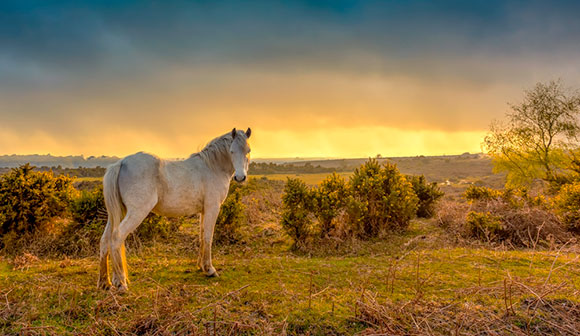
And the wooded lowlands of The New Forest are the homeland and main habitat of the ponies of the same name. Wild horses are known to have lived in New Forest during the time of Knud the Great (990-1035). Over several centuries, attempts have been made to improve the breed by crossing them with other breeds: the Welsh in the 13th century, the English thoroughbred in the 18th century, and the Arabian in the 19th century. This influx of blood from other breeds made it possible to increase the growth and improve the appearance of the New Forest pony, but negatively affected its character and reduced its resistance to cold. In 1891 Lord Arthur Cecil and Lord Lucas created an association for the improvement of the breed. This led to an influx of blood from other local ponies: Dartmoor, Exmoor and later Welsh mountain ponies, which positively influenced the further development of the breed. In 1910 the first herd book was published.
Today, New Forest ponies roam free in the wild. The climate and nature of this region has made these animals very hardy and unpretentious. Their movements are free, active and expressive, and their innate intelligence and obedient nature make them easy to train. New Forest ponies are used under saddle (for riding children and light adults) and in light harness. The New Forest pony breed is now quite popular, they are bred throughout Britain, as well as in Europe, America, Australia and New Zealand.
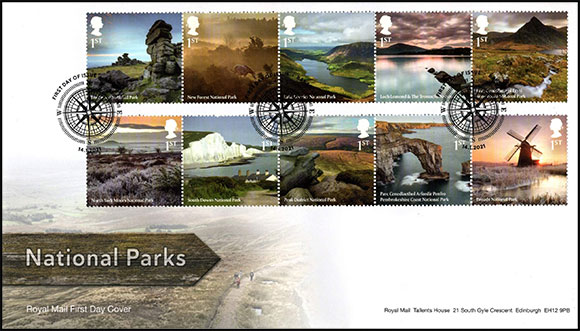
Перейти в каталог
